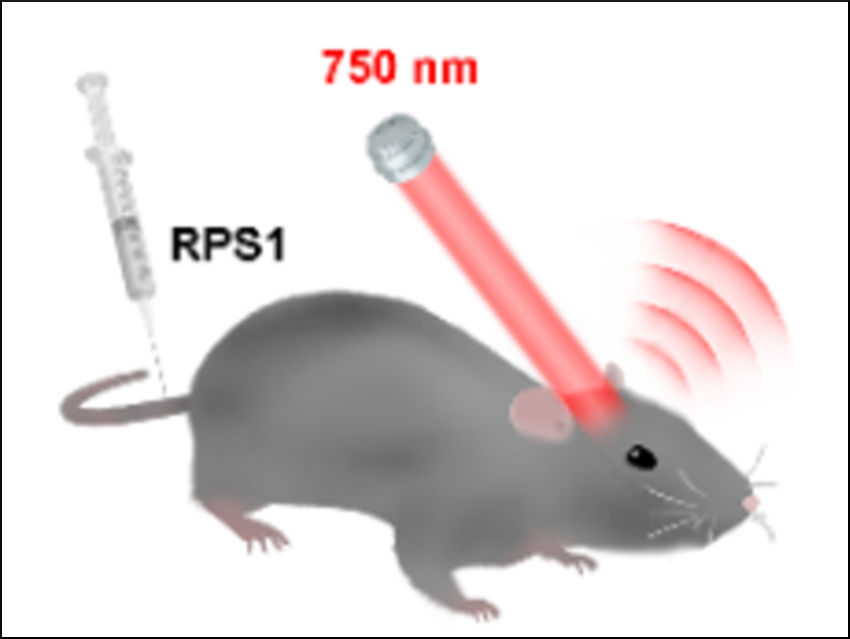Copper(II) enrichment in the brain is highly related to Alzheimer’s disease. However, tracing copper(II) in the brain using fluorescence imaging is still challenging. This is due to the limited penetration depth of light in tissue, the blood-brain barrier (BBB) as a barrier for fluorescence probes to cross, and fluorescence quenching that is caused by the paramagnetic effect of copper(II).
Photoacoustic (PA) imaging could be a better alternative. In PA imaging, laser pulses are delivered into biological tissues, some of the energy is absorbed and converted into heat. This leads to the emission of (ultrasonic) sound waves (pictured in red). These sound waves can be detected.
Xuanjun Zhang, University of Macau, China, Zonghai Sheng, Shenzhen Institute of Advanced Technology, Chinese Academy of Sciences, and colleagues have developed a series of activatable PA probes with low molecular weight. These probes can selectively chelate copper(II) to form radicals with turn-on PA signals in the near-infrared (NIR) region. Introducing the electron-donating N,N-dimethylaniline group into the probe (pictured below) was found to significantly enhance the radical stability and PA intensity.

The optimized probe showed a fast response—within seconds—and high Cu(II) selectivity. It could effectively cross the BBB due to its low molecular weight. This allowed the researchers to image copper(II) in the brain of mice via a PA technique for the first time. The study verified a much higher level of Cu(II) in the brains of mice with an Alzheimer’s model compared with normal mice. Such probes may have applications in Alzheimer’s diagnosis, drug screening, and the evaluation of treatments.
- Activatable Small-Molecule Photoacoustic Probes that Cross the Blood-Brain Barrier for Visualization of Copper(II) in Mice with Alzheimer’s Disease,
Xuanjun Zhang, Shichao Wang, Zonghai Sheng, Zhenguo Yang, Dehong Hu, Xiaojing Long, Gang Feng, Yubin Liu, Zhen Yuan, Jingjing Zhang, Hairong Zheng,
Angew. Chem. Int. Ed. 2019.
https://doi.org/10.1002/anie.201904047




